
El Paso: The Sun City of Texas
Discover El Paso, Texas: A city of sunshine, rich history, and vibrant culture, nestled at the crossroads of the United States and Mexico.
El Paso, often called the Sun City, is a vibrant destination located at the western tip of Texas. The city offers a unique blend of cultures, influenced by its proximity to Mexico, which is just across the Rio Grande river. Its rich history, delicious cuisine, and stunning landscapes make it a must-visit for any traveler. El Paso boasts a wide range of activities and attractions. History enthusiasts can explore the El Paso Mission Trail, a historic route featuring missions dating back to the 17th century. Nature lovers will appreciate the Franklin Mountains State Park, offering hiking, rock climbing, and breathtaking views of the desert landscape. The city is also home to the El Paso Museum of Art and the Plaza Theatre, ensuring that art and culture are never far from reach. The local cuisine is a highlight of any visit to El Paso. The city is famous for its Tex-Mex dishes, featuring delicious combinations of tacos, enchiladas, and burritos. Don’t miss out on trying the local specialty, the chile con queso. The vibrant nightlife and friendly locals add to the warm, welcoming atmosphere that El Paso is known for.
Local tips in El Paso
- Visit the El Paso Mission Trail early in the morning to avoid the midday heat and enjoy a quieter experience.
- If you plan to hike in Franklin Mountains State Park, bring plenty of water and wear sun protection, as the desert sun can be intense.
- Try to visit during the Sun City Music Festival, held annually, for a taste of the local music scene.
- Be sure to have some cash on hand as some local markets and food vendors may not accept credit cards.
- Cross the border to Ciudad Juárez, Mexico, if you have the time and appropriate documentation, for a unique cultural experience.
Neighbourhoods in El Paso
El Paso: The Sun City of Texas
El Paso, often called the Sun City, is a vibrant destination located at the western tip of Texas. The city offers a unique blend of cultures, influenced by its proximity to Mexico, which is just across the Rio Grande river. Its rich history, delicious cuisine, and stunning landscapes make it a must-visit for any traveler. El Paso boasts a wide range of activities and attractions. History enthusiasts can explore the El Paso Mission Trail, a historic route featuring missions dating back to the 17th century. Nature lovers will appreciate the Franklin Mountains State Park, offering hiking, rock climbing, and breathtaking views of the desert landscape. The city is also home to the El Paso Museum of Art and the Plaza Theatre, ensuring that art and culture are never far from reach. The local cuisine is a highlight of any visit to El Paso. The city is famous for its Tex-Mex dishes, featuring delicious combinations of tacos, enchiladas, and burritos. Don’t miss out on trying the local specialty, the chile con queso. The vibrant nightlife and friendly locals add to the warm, welcoming atmosphere that El Paso is known for.
When is the best time to go to El Paso?
Iconic landmarks you can’t miss
San Jacinto Plaza
Discover the beauty and culture of San Jacinto Plaza, a vibrant park in Downtown El Paso perfect for relaxation and community engagement.

Southwest University Park
Discover the excitement of Southwest University Park, El Paso's premier stadium for thrilling sports, concerts, and unforgettable events.

Franklin Mountains State Park
Explore Franklin Mountains State Park, a stunning Texas destination with breathtaking views, diverse wildlife, and endless outdoor adventures for every nature lover.

Bob-O's Family Fun Center
Experience a world of fun at Bob-O's Family Fun Center in El Paso, offering go-karts, laser tag, arcade games, and more for the perfect family outing.
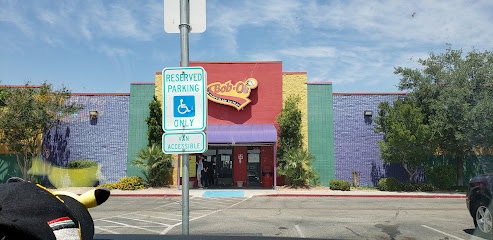
El Paso Museum of Art
Explore the El Paso Museum of Art: where modern creativity meets cultural heritage, featuring stunning collections and engaging community programs.
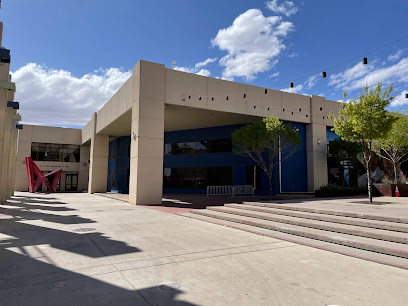
Chamizal National Memorial
Explore the rich heritage and captivating beauty of Chamizal National Memorial, where history and culture converge in El Paso, Texas.

Hueco Tanks State Park & Historic Site
Explore the breathtaking landscapes and rich heritage of Hueco Tanks State Park & Historic Site, a must-visit destination near El Paso, Texas.

El Paso Municipal Rose Garden
Explore the enchanting El Paso Municipal Rose Garden, a stunning floral paradise perfect for relaxation, photography, and nature appreciation.

El Paso Museum of History
Explore the heart of El Paso’s history at the El Paso Museum of History—where stories of the past come alive in engaging exhibits and community events.

Tom Lea Upper Park
Discover the beauty of Tom Lea Upper Park in El Paso, where nature meets recreation amidst stunning mountain views and lush landscapes.

Jungle Jaks
Experience endless fun at Jungle Jaks, El Paso's premier indoor amusement center with thrilling attractions and delicious pizza for the whole family.

El Paso Holocaust Museum & Study Center
Explore the El Paso Holocaust Museum & Study Center, a poignant reminder of history, promoting tolerance and understanding through powerful exhibits.
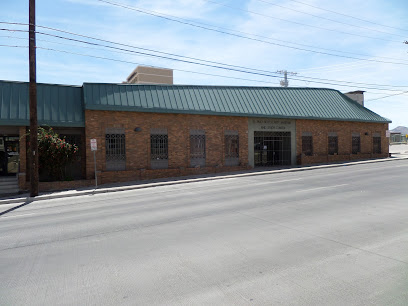
National Border Patrol Museum
Discover the fascinating history of border security at the National Border Patrol Museum in El Paso, Texas, showcasing artifacts and stories from the U.S. Border Patrol.

St. Patrick Cathedral
Discover the majestic St. Patrick Cathedral, a stunning Gothic Revival masterpiece and a serene spiritual retreat in the heart of El Paso.

El Paso Museum of Archaeology
Explore the rich cultural heritage of the American Southwest at the El Paso Museum of Archaeology, where history comes to life through fascinating exhibits.

Unmissable attractions to see
San Jacinto Plaza
Experience the vibrant culture and serene beauty of San Jacinto Plaza in Downtown El Paso, a perfect destination for relaxation and community events.

El Paso Zoo and Botanical Gardens
Explore the El Paso Zoo and Botanical Gardens, a vibrant destination showcasing wildlife, lush gardens, and educational experiences for the whole family.

Wet 'N' Wild Waterworld
Experience the ultimate fun at Wet 'N' Wild Waterworld, Texas's top water park filled with thrilling slides, lazy rivers, and family-friendly attractions.
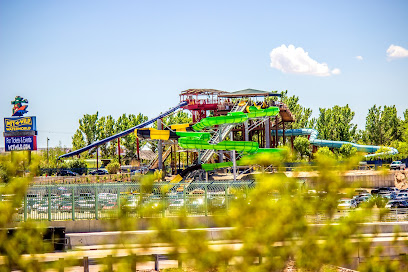
Ascarate Park
Explore the beauty and recreational opportunities at Ascarate Park, El Paso's largest urban oasis offering nature, culture, and fun.

Memorial Park
Experience the beauty of nature in Memorial Park, El Paso's serene urban oasis, perfect for relaxation and outdoor activities.

Franklin Mountains State Park
Discover the awe-inspiring beauty of Franklin Mountains State Park in El Paso, Texas, with trails, wildlife, and stunning desert vistas.
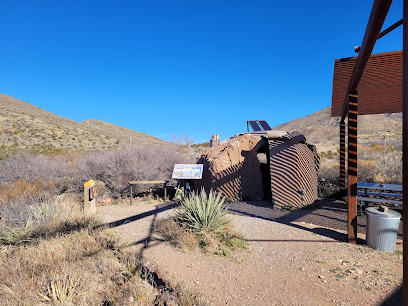
El Paso Museum of Art
Explore the El Paso Museum of Art, a vibrant hub of modern and contemporary art in the heart of Texas, showcasing diverse and inspiring collections.

El Paso Museum of Art
Discover the El Paso Museum of Art, where modern masterpieces and regional talent converge in a vibrant cultural experience in downtown El Paso.

Chamizal National Memorial
Visit Chamizal National Memorial in El Paso, TX, an inspiring haven of history, art, and nature celebrating cultural unity and the US-Mexico border.

Hueco Tanks State Park & Historic Site
Explore the breathtaking landscapes and rich history of Hueco Tanks State Park, a unique outdoor paradise near El Paso, Texas.

Hueco Tanks State Park & Historic Site
Experience the unique blend of natural beauty and rich history at Hueco Tanks State Park, a must-visit destination near El Paso.

Sue Young Park
Discover the natural beauty and recreational charm of Sue Young Park, a perfect retreat for families and nature lovers in Northeast El Paso.

Chuck Heinrich Memorial Park
Explore Chuck Heinrich Memorial Park in El Paso – a serene city park with lush greenery, play areas, and scenic walking trails for all outdoor enthusiasts.
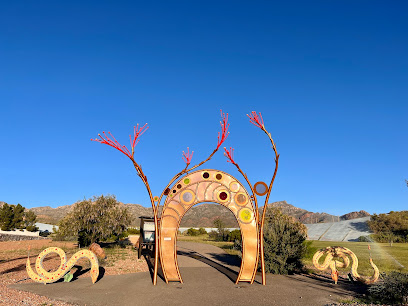
El Paso Municipal Rose Garden
Experience the enchanting El Paso Municipal Rose Garden, a floral paradise featuring over 1,500 rose varieties in a serene urban setting.

El Paso Museum of History
Explore the rich history of El Paso at the El Paso Museum of History, where the past meets the present in engaging exhibits and community events.

Essential places to dine
L & J Cafe
Experience authentic Mexican flavors at L & J Cafe in El Paso - a family-friendly gem serving delicious dishes at affordable prices.

Los Bandidos De Carlos & Mickey's
Experience authentic Mexican cuisine at Los Bandidos De Carlos & Mickey's in El Paso – where every meal is a celebration!
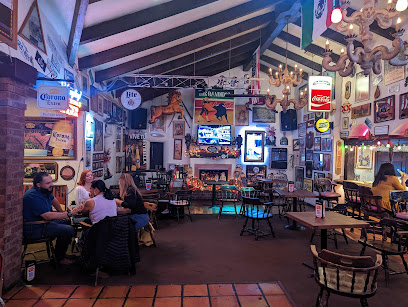
West Texas Chophouse
Experience authentic Texas flavors at West Texas Chophouse, where prime steaks meet Southern hospitality in a vibrant setting.

Good Luck Cafe
Discover authentic Mexican flavors at Good Luck Cafe in El Paso—your go-to spot for delicious breakfasts and cozy dining experiences.
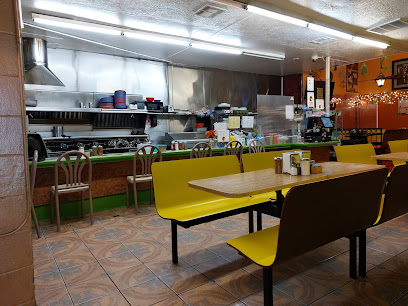
The Melting Pot
Discover the exquisite world of fondue at The Melting Pot in El Paso – where every meal is a delicious adventure.

Angry Owl Southwest Grill & Cantina
Discover the perfect blend of American comfort food and Tex-Mex zest at Angry Owl Southwest Grill & Cantina in El Paso.

BJ's Restaurant & Brewhouse
Discover BJ's Restaurant & Brewhouse in El Paso - where great food meets handcrafted brews in a lively atmosphere perfect for any occasion.
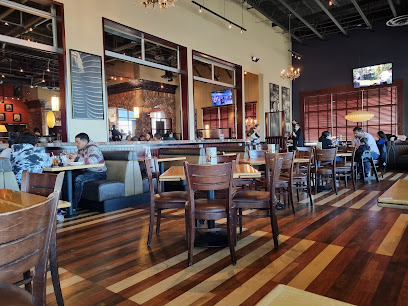
The Hoppy Monk
Experience the vibrant flavors and extensive craft beer selection at The Hoppy Monk in El Paso—a must-visit gastropub for foodies.
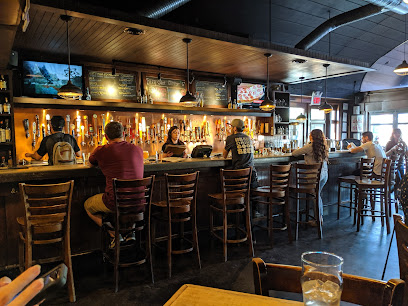
Morra Mia
Experience the rich culinary landscape of El Paso at Morra Mia—where flavor meets tradition in every bite.

Rib Hut
Discover mouthwatering barbecue delights at Rib Hut in El Paso – where tradition meets flavor in every bite!

Ruth's Chris Steak House
Discover culinary excellence at Ruth's Chris Steak House in El Paso - where premium steaks meet exquisite service.

Crave Kitchen & Bar
Discover the flavors of America at Crave Kitchen & Bar in El Paso—where breakfast meets creativity in every dish.

The Tap Bar & Restaurant
Experience vibrant dining at The Tap Bar & Restaurant in Downtown El Paso – where delicious food meets great company!

Anson 11
Discover Anson 11 in Downtown El Paso: where local flavors meet innovative cuisine in an inviting atmosphere.
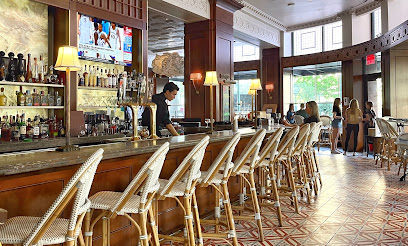
Ripe Eatery
Experience family-friendly dining at Ripe Eatery in El Paso, where delicious American brunch meets cozy ambiance.

Markets, malls and hidden boutiques
The Fountains at Farah
Explore the vibrant shopping oasis of The Fountains at Farah in El Paso, where shopping, dining, and entertainment come together in a picturesque setting.

The Shoppes at Solana
Discover unique shopping and dining at The Shoppes at Solana, a premier shopping mall in El Paso, Texas, blending local charm with popular brands.

Xicali Imports
Explore Xicali Imports in El Paso, Texas, for a delightful shopping experience filled with unique gifts and festive party supplies.

Ysleta Mission Gift Shop-Voted El Paso’s Best Gift Shop
Explore the Ysleta Mission Gift Shop, where history and culture meet unique local treasures in the heart of El Paso.

Mission Del Rey Southwest
Explore Mission Del Rey Southwest in El Paso for unique gifts and souvenirs that capture the spirit of the Southwest.
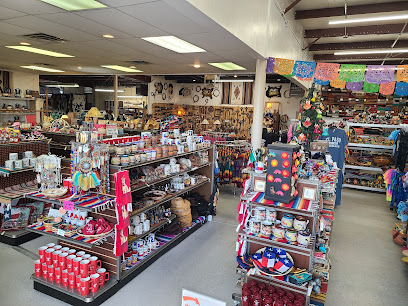
Chuco Relic Central
Discover unique El Paso souvenirs and local artisan crafts at Chuco Relic Central, the ultimate gift shop for tourists and locals alike.

So El Paso
Discover unique gifts and local souvenirs at So El Paso, your go-to destination for memorable treasures and corporate gifts in the heart of Texas.

Chuco Relic West
Explore Chuco Relic West for unique souvenirs and local art that encapsulate the spirit of El Paso, Texas.

One Size Fits All Vintage
Discover timeless fashion treasures at One Size Fits All Vintage in Downtown El Paso, where unique styles await every fashion enthusiast.

The Red Door Vintage & Horror
Explore The Red Door Vintage & Horror in El Paso, Texas—where vintage fashion meets spooky collectibles in a uniquely artistic setting.

Area 51 Shoppe
Discover the charm of Area 51 Shoppe in El Paso, where unique collectibles and antiques await every curious traveler.

Collectibles Gift Shop
Explore a world of unique treasures at Collectibles Gift Shop in El Paso, TX, where nostalgia meets local artisan craftsmanship.

Tooth and Veil Oddities and Macabre Shop
Explore the unique and macabre at Tooth and Veil Oddities and Macabre Shop, a treasure trove of antiques, vintage finds, and eclectic curiosities in El Paso.

The Vault Vintage Outlet
Uncover retro treasures at The Vault Vintage Outlet, El Paso's premier destination for unique vintage clothing and thrift finds.

The Shops on Mesa
Explore The Shops on Mesa, a vibrant shopping mall in El Paso, Texas, offering diverse boutiques, dining, and entertainment for every visitor.
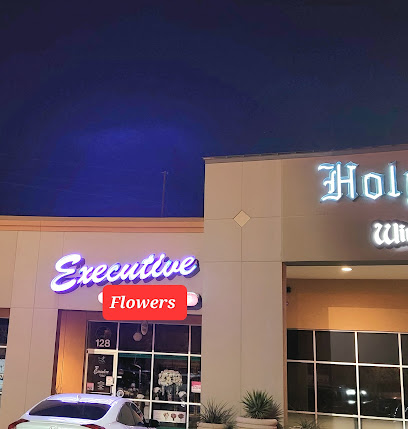
Essential bars & hidden hideouts
The Hoppy Monk
Experience the best of craft beer and delicious pub fare at The Hoppy Monk, a vibrant gastropub in El Paso, Texas.

The Tap Bar & Restaurant
Discover The Tap Bar & Restaurant in Downtown El Paso – a vibrant bar and restaurant with delicious food and a lively atmosphere perfect for tourists.

GRINGO THEORY PATIO BAR
Discover the lively ambiance of Gringo Theory Patio Bar in El Paso, where great drinks and vibrant nightlife create unforgettable moments.

Park Tavern
Experience the lively atmosphere and exquisite flavors of Park Tavern in Downtown El Paso, where modern American cuisine meets a vibrant bar scene.

Hope and Anchor
Discover the lively atmosphere of Hope and Anchor, a premier bar in El Paso with craft cocktails, live music, and a welcoming vibe for all.

The Tiki Room El Paso
Discover tropical cocktails and Polynesian cuisine at The Tiki Room El Paso, where a festive atmosphere awaits you in Downtown El Paso.

Later, Later
Discover Later, Later: El Paso's vibrant bar known for creative cocktails and a lively atmosphere that enhances your night out.

Craft and Social
Discover Craft and Social in El Paso: A premier pub offering a vibrant atmosphere, delectable food, and an extensive selection of craft beers.

International Bar
Discover the lively atmosphere of International Bar in El Paso, where great drinks and vibrant nightlife await every visitor.

915 Vibes
Discover a vibrant grill experience at 915 Vibes in El Paso, where flavor meets a lively atmosphere for an unforgettable dining adventure.

Church Bar
Discover the lively Church Bar in Downtown El Paso, where great drinks and a vibrant atmosphere come together for an unforgettable night out.
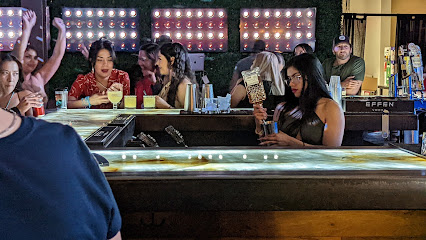
1922
Dive into the energetic nightlife at 1922, a top cocktail bar in Downtown El Paso, where exceptional drinks meet a lively atmosphere.

Werk Bar
Discover El Paso's vibrant nightlife at Werk Bar, where live music and great drinks create unforgettable experiences.
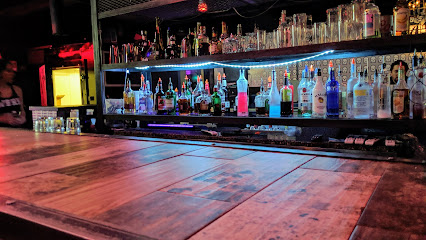
Prickly Elder
Discover El Paso's nightlife at Prickly Elder, a unique bar offering an eclectic atmosphere and a fantastic drink selection.
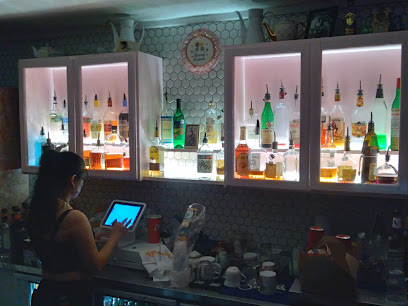
Kinda Classy Bar
Experience the vibrant nightlife at Kinda Classy Bar in El Paso, where good drinks and great company come together for a memorable evening.

Local Phrases
-
- HelloHola
[oh-lah] - GoodbyeAdiós
[ah-dee-ohs] - YesSí
[see] - NoNo
[noh] - Please/You're welcomePor favor/De nada
[por fah-vor/deh nah-dah] - Thank youGracias
[grah-see-ahs] - Excuse me/SorryPerdón/Lo siento
[pehr-dohn/loh see-ehn-toh] - How are you?¿Cómo estás?
[koh-moh ehs-tahs] - Fine. And you?Bien. ¿Y tú?
[byehn. ee too] - Do you speak English?¿Hablas inglés?
[ah-blahs een-glehs] - I don't understandNo entiendo
[noh ehn-tee-ehn-doh]
- HelloHola
-
- I'd like to see the menu, pleaseMe gustaría ver el menú, por favor
[meh goos-tah-ree-ah behr ehl meh-noo, por fah-vor] - I don't eat meatNo como carne
[noh koh-moh kahr-neh] - Cheers!¡Salud!
[sah-loohd] - I would like to pay, pleaseMe gustaría pagar, por favor
[meh goos-tah-ree-ah pah-gahr, por fah-vor]
- I'd like to see the menu, pleaseMe gustaría ver el menú, por favor
-
- Help!¡Ayuda!
[ah-yoo-dah] - Go away!¡Vete!
[veh-teh] - Call the Police!¡Llama a la policía!
[yah-mah ah lah poh-lee-see-ah] - Call a doctor!¡Llama a un médico!
[yah-mah ah oon meh-dee-koh] - I'm lostEstoy perdido
[ehs-toy pehr-dee-doh] - I'm illEstoy enfermo
[ehs-toy ehn-fehr-moh]
- Help!¡Ayuda!
-
- I'd like to buy...Me gustaría comprar...
[meh goos-tah-ree-ah kohm-prahr...] - I'm just lookingSólo estoy mirando
[soh-loh ehs-toy mee-rahn-doh] - How much is it?¿Cuánto cuesta?
[kwan-toh kwes-tah] - That's too expensiveEso es demasiado caro
[eh-soh ehs deh-mah-syah-doh kah-roh] - Can you lower the price?¿Puede bajar el precio?
[pweh-deh bah-har ehl pree-syoh]
- I'd like to buy...Me gustaría comprar...
-
- What time is it?¿Qué hora es?
[keh oh-rah ehs] - It's one o'clockEs la una
[ehs lah oo-nah] - Half past (10)Las diez y media
[lahs dyehs ee meh-dee-ah] - MorningMañana
[mah-nyah-nah] - AfternoonTarde
[tahr-deh] - EveningNoche
[noh-cheh] - YesterdayAyer
[ah-yehr] - TodayHoy
[oy] - TomorrowMañana
[mah-nyah-nah] - 1Uno
[oo-noh] - 2Dos
[dohs] - 3Tres
[trehs] - 4Cuatro
[kwah-troh] - 5Cinco
[seeng-koh] - 6Seis
[sayss] - 7Siete
[syeh-teh] - 8Ocho
[oh-choh] - 9Nueve
[nweh-veh] - 10Diez
[dyehs]
- What time is it?¿Qué hora es?
-
- Where's a/the...?¿Dónde está el/la...?
[dohn-deh ehs-tah ehl/lah] - What's the address?¿Cuál es la dirección?
[kwal ehs lah dee-rehk-syon] - Can you show me (on the map)?¿Puedes mostrarme (en el mapa)?
[pweh-dehs mohs-trahr-meh (ehn ehl mah-pah)] - When's the next (bus)?¿Cuándo es el próximo (autobús)?
[kwan-doh ehs ehl proh-ksy-moh (ow-toh-boos)] - A ticket (to ....)Un boleto (a ....)
[oon boh-leh-toh (ah)]
- Where's a/the...?¿Dónde está el/la...?
History of El Paso
-
Long before European explorers set foot in the region, El Paso was home to various indigenous groups including the Manso, Suma, and Jumano peoples. These early inhabitants lived off the land, hunting, gathering, and trading with neighboring tribes. Their influence is still evident today in the cultural fabric of the area.
-
In 1598, Spanish explorer Don Juan de Oñate led an expedition through the El Paso area, marking the beginning of Spanish influence in the region. The expedition's crossing of the Rio Grande near modern-day El Paso is commemorated by the annual celebration of 'El Paso del Norte.' The Spanish established missions like the Ysleta Mission, which became focal points for the spread of Christianity and European culture.
-
After Mexico gained independence from Spain in 1821, the area of El Paso became part of the Mexican state of Chihuahua. The settlement grew as a trading post and military outpost. The Treaty of Guadalupe Hidalgo in 1848, which ended the Mexican-American War, resulted in the northern part of the area, including El Paso, becoming part of the United States.
-
The arrival of the Southern Pacific Railroad in 1881 transformed El Paso into a booming frontier town. The railroads brought an influx of settlers, businesses, and industries, making El Paso a crucial transportation hub. The city’s economy diversified with the growth of cattle ranching, mining, and later, manufacturing.
-
During Prohibition in the 1920s, El Paso's position on the U.S.-Mexico border made it a hotspot for smuggling alcohol. The city's nightlife flourished with speakeasies and nightclubs catering to both Americans and Mexicans. This period also saw the rise of organized crime in the region.
-
El Paso played a significant role during World War II with the establishment of Fort Bliss as a major training and deployment center for U.S. troops. The presence of the military continues to shape the city's economy and culture. Fort Bliss remains one of the largest military complexes in the United States.
-
El Paso was also a significant site for the Civil Rights Movement. In 1957, the city's public schools were among the first in the South to desegregate, setting a precedent for other cities to follow. Activists and community leaders in El Paso have continued to advocate for social justice and equal rights.
-
Today, El Paso is a vibrant, multicultural city where American and Mexican cultures blend seamlessly. The city celebrates its rich heritage with numerous festivals, museums, and cultural institutions, such as the El Paso Museum of History and the Plaza Theatre. The influence of its diverse population is evident in the local cuisine, music, and art scenes.
El Paso Essentials
-
El Paso is accessible by air, road, and rail. The El Paso International Airport (ELP) offers numerous domestic flights and limited international services. Major airlines such as American Airlines, Southwest, and United operate from this airport. If you're driving, El Paso is served by major highways including I-10, which connects the city to other parts of Texas and neighboring states. Greyhound and other bus services provide interstate travel options. Amtrak’s Sunset Limited route also stops in El Paso, connecting the city to Los Angeles and New Orleans.
-
Within El Paso, transportation options include car rentals, taxis, ride-sharing services like Uber and Lyft, and public transit. Sun Metro operates bus routes across the city, including the Brio Rapid Transit System for faster travel on main corridors. For a more scenic option, consider the El Paso Streetcar, which runs through downtown and the University of Texas at El Paso (UTEP) area. Biking is also a viable option with several bike-sharing programs available.
-
The official currency is the United States Dollar (USD). Credit and debit cards are widely accepted, including in most restaurants, shops, and hotels. ATMs are plentiful throughout the city. It is advisable to carry some cash for smaller establishments or markets where cards may not be accepted.
-
El Paso is generally considered a safe city for tourists, but it's always wise to take standard precautions. Avoid walking alone at night in less crowded areas and keep an eye on your belongings in busy places. Specific areas with higher crime rates include parts of Segundo Barrio and certain sections of the northeast. Always stay aware of your surroundings and avoid displaying valuables openly.
-
In case of an emergency, dial 911 for immediate assistance. El Paso has several hospitals, including the University Medical Center and Del Sol Medical Center. Pharmacies are abundant, with major chains like Walgreens and CVS available for minor health issues. It is recommended to have travel insurance that covers medical emergencies.
-
Fashion: Do dress comfortably and appropriately for the hot desert climate. Light clothing and sunscreen are advisable. Avoid overly revealing attire in more conservative areas or religious sites. Religion: Do respect the diverse religious practices in El Paso, including Catholicism and various Protestant denominations. Public Transport: Do be courteous and offer seats to elderly or disabled passengers. Don't play loud music or eat on public transport. Greetings: Do greet people with a friendly 'hello' or 'hi.' Handshakes are common in formal settings. Eating & Drinking: Do try local Tex-Mex cuisine and be open to trying new foods. Don't refuse hospitality or invitations to dine, as it is considered impolite.
-
To experience El Paso like a local, visit the downtown area and explore its many art galleries, markets, and eateries. The Plaza Theatre and the El Paso Museum of Art offer cultural experiences. Don't miss the scenic views from the Wyler Aerial Tramway and the Franklin Mountains State Park. Additionally, attending a UTEP Miners game or a local festival can give you a taste of the community spirit.
Trending Landmark in El Paso
-
San Jacinto Plaza
-
Southwest University Park
-
Franklin Mountains State Park
-
Bob-O's Family Fun Center
-
El Paso Museum of Art
-
Chamizal National Memorial
-
Hueco Tanks State Park & Historic Site
-
El Paso Municipal Rose Garden
-
El Paso Museum of History
-
Tom Lea Upper Park
-
Jungle Jaks
-
El Paso Holocaust Museum & Study Center
-
National Border Patrol Museum
-
St. Patrick Cathedral
-
El Paso Museum of Archaeology
Nearby Cities to El Paso
-
Things To Do in Las Cruces
-
Things To Do in White Sands
-
Things To Do in Truth or Consequences
-
Things To Do in Ruidoso
-
Things To Do in Socorro
-
Things To Do in Roswell
-
Things To Do in Bisbee
-
Things To Do in Albuquerque
-
Things To Do in Bernalillo
-
Things To Do in Midland
-
Things To Do in Tucson
-
Things To Do in Santa Fe
-
Things To Do in Sante Fe
-
Things To Do in Las Vegas
-
Things To Do in Los Alamos
















